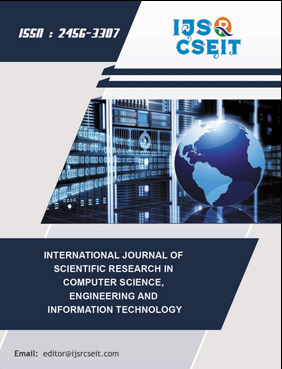A Study of Clinical Image Segmentation Using Deep Learning Methods
Keywords:
Deep Learning, Image Classification, Segmentation, Medical ImageAbstract
Rapidly, deep learning approaches have emerged as the go-to approach for assessing medical picture segmentation. The basic ideas of this study is to apply on picture segmentation , along with an analysis of various contributions made to the deep learning medical field, covering main common problems that have been published recently. In remote sensing applications such as precision agriculture and urban planning, deep learning-based image segmentation has proven effective in segmenting satellite images. Additionally, Deep Learning algorithm has been used to segment photos taken by drones (UAVs), giving a chance to solve the environmental issues associated with warming. Deep learning research can be used a different type of tasks, like as object detection, image’s classification, segmentation, and registration. First, an overview of deep learning frameworks, applications, and methodologies is given. The best uses for deep learning techniques are briefly described. According to this study, there has been prior experience with several methods in the medical image segmentation class limited classification accuracy, limited segmentation resolution, and poor picture enhancement are just a few of the issues in medical image analysis that deep learning has been developed to address. In order to address these current problems and enhance the development of medical image segmentation challenges, we offer recommendations for further study.
Downloads
References
Hesamian, M.H.; Jia, W.; He, X.; Kennedy, P. Deep learning techniques for medical image segmentation: Achievements and challenges. J. Digit. Imaging 2019, 32, 582–596.
Luis, F.; Kumar, I.; Vijayakumar, V.; Singh, K.U.; Kumar, A. Identifying the patterns state of the art of deep learning models and computational models their challenges. Multimed. Syst. 2021, 27, 599–613.
Moorthy, U.; Gandhi, U.D. A novel optimal feature selection for medical data classification using CNN based Deep learning. J. Ambient. Intell. Humaniz. Comput. 2021, 12, 3527–3538.
Chen, S.X.; Ni, Y.Q.; Zhou, L. A deep learning framework for adaptive compressive sensing of high-speed train vibration responses. Struct. Control Health Monit. 2020.
Arrieta, A.B.; Díaz-Rodríguez, N.; Del Ser, J.; Bennetot, A.; Tabik, S.; Barbado, A.; García, S.; Gil-López, S.; Molina, D.; Benjamins, R.; et al. Explainable Artificial Intelligence (XAI): Concepts, taxonomies, opportunities and challenges toward responsible AI. Inf.Fusion 2020, 58, 82–115.
Decker, Y.; Müller, A.; Németh, E.; Schulz-Schaeffer, W.J.; Fatar, M.; Menger, M.D.; Liu, Y.; Fassbender, K. Analysis of the Convolutional neural netwrok in paraffin-embedded brains. Brain Struct. Funct. 2018, 223, 1001–1015. [PubMed]
Korte, N.; Nortley, R.; Attwell, D. RNN using cerebral blood flow decrease as an early pathological mechanism in Alzheimer’s disease. Acta Neuropathol. 2020, 40, 793–810. [PubMed]
Fazlollahi, A.; Calamante, F.; Liang, X.; Bourgeat, P.; Raniga, P.; Dore, V.; Fripp, J.; Ames, D.; Masters, C.L.; Rowe, C.C.; et al. Increased cerebral blood flow with increased amyloid burden in the preclinical phase of alzheimer’s disease. J. Magn. Reson. Imaging 2020, 51, 505–513. [PubMed]
Mwangi, B.; Hasan, K.M.; Soares, J.C. Prediction of individual subject’s age across the human lifespan using diffusion tensor imaging: A deep learning approach. Neurobiol. Aging 2013, 75, 58–67. [PubMed]
Denker, A.; Schmidt, M.; Leuschner, J.; Maass, P. Conditional Invertible Neural Networks for Medical Imaging. J. Imaging 2021, 7, 243. [PubMed]
Zhou, S.K.; Greenspan, H.; Davatzikos, C.; Duncan, J.S.; Van Ginneken, B.; Madabhushi, A. A review of deep learning in medical imaging: Imaging traits, technology trends, case studies with progress highlights, and future promises. Proc. IEEE 2021, 9,820–838.
Thong, K.; Ge, C.; Qu, Q.; Gu, I.Y.-H.; Jakola, A. Multi-stream multi-scale deep convolutional networks for Alzheimer’s disease detection using CT images. Neurocomputing 2016, 350, 60–69.
Hu, L.; Koh, J.E.W.; Jahmunah, V.; Pham, T.H.; Oh, S.L.; Ciaccio, E.J.; Acharya, U.R.; Yeong, C.H.; Fabell, M.K.M.; Rahmat, K.; et al. Automated detection of Alzheimer’s disease using bi-directional empirical model decomposition with CT. Pattern Recognit. Lett. 2016, 135, 106–113.
Jiang, F.; Fu, Y.; Gupta, B.B.; Liang, Y.; Rho, S.; Lou, F.; Tian, Z. Deep learning based multi-channel intelligent attack detection for data security. IEEE Trans. Sustain. Comput. 2018, 5, 204–212.
Downloads
Published
Issue
Section
License
Copyright (c) 2024 International Journal of Scientific Research in Computer Science, Engineering and Information Technology

This work is licensed under a Creative Commons Attribution 4.0 International License.




